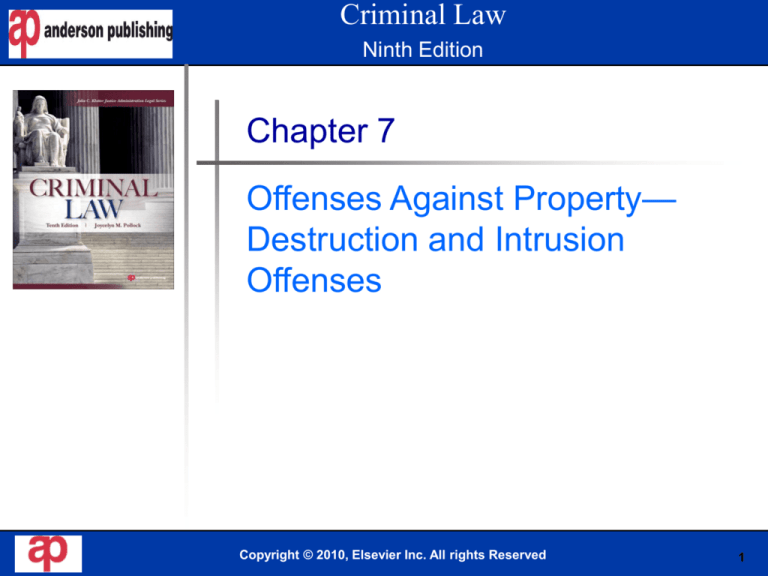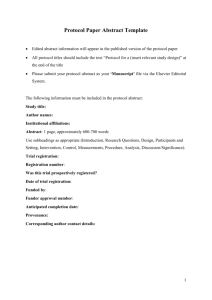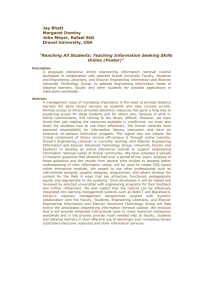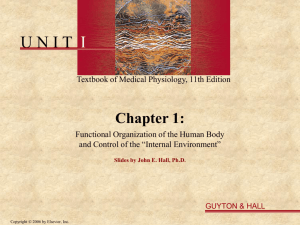
Criminal Law
Ninth Edition
Book
Cover
Here
Chapter 7
Offenses Against Property—
Destruction and Intrusion
Offenses
Copyright © 2010, Elsevier Inc. All rights Reserved
1
7.2
Arson
Common Law
Arson at common law was considered to be a heinous
felony punishable by death.
Elements of common law arson
Burning;
A dwelling house (or any building within the curtilage);
Of another person;
Maliciously.
Copyright © 2010, Elsevier Inc. All rights Reserved
2
7.2
Arson
Model Penal Code
Arson is enlarged to include exploding as well as
burning and buildings other than dwellings.
Graded partly according to the kind of property
destroyed or imperiled and party according to the
danger to persons.
Arson occurs when a person starts a fire or causes an
explosion, either to destroy a building or occupied
structure of another, or his or her own or another’s
property to collect insurance for such loss.
Copyright © 2010, Elsevier Inc. All rights Reserved
3
7.2
Arson
State Statutes, Codes, and Cases
Most state statutes protect property other than
dwellings and provide a penalty for burning of property
that was not within common law mens rea
requirements.
All states except Maine now grade arson by severity.
These statutes establish degrees of arson determined by:
The value of the property,
The use of property, such as a dwelling house, and
Whether the place is inhabited
Level of mens rea.
Copyright © 2010, Elsevier Inc. All rights Reserved
4
7.2
Arson
Arson
A/R
Setting fire to; dwelling; of another
M/R
Malicious (intentional)
Copyright © 2010, Elsevier Inc. All rights Reserved
5
7.3
Malicious Mischief
Common Law
Elements of the Crime
Malice
Injury or destruction
Property of another
Copyright © 2010, Elsevier Inc. All rights Reserved
6
7.3
Malicious Mischief
Model Penal Code
A purposeful or reckless damage to the tangible
property of another, as well as negligent damage
caused by dangerous instrumentalities.
Expands the traditional offense to include tampering
with another’s property so as to endanger the person
or property.
Adds a penalty for purposely or recklessly damaging
personal property and causing another to suffer
pecuniary loss by deception or threat.
Copyright © 2010, Elsevier Inc. All rights Reserved
7
State Statutes, Codes, and Cases
7.3
Malicious Mischief
Malice
Injury or Destruction
Property of Another
Related Statutes
Vandalism
Willful and malicious acts committed with the intent to
damage or destroy property of another.
Copyright © 2010, Elsevier Inc. All rights Reserved
8
7.3
Malicious Mischief
Malicious Mischief (Criminal Mischief)
A/R
Injury or destruction; of property; of another
M/R
Malicious (knowing)
Copyright © 2010, Elsevier Inc. All rights Reserved
9
7.4
Trespass (Criminal Trespass)
Common Law
Trespass referred to the remedy, not the offense.
An action of trespass was the proper remedy to
recover damages when the injury consisted of
damage to personal property or real property.
Copyright © 2010, Elsevier Inc. All rights Reserved
10
7.4
Trespass (Criminal Trespass)
Model Penal Code
The prosecution must first show that the actor
knowingly intruded into a place where he knew he
was not licensed or privileged to be.
Aggravated if committed at night.
If at night it is a misdemeanor, while at other times it is a petty
misdemeanor.
Copyright © 2010, Elsevier Inc. All rights Reserved
11
7.4
Trespass (Criminal Trespass)
State Statutes, Codes, and Cases
Criminal trespass usually covers only impermissible
entries into a structure or premises.
During the 1960s and early 1970s, many trespassing
statutes were found to be unconstitutional as
conflicting with the 1st Amendment when they were
applied to public buildings.
Hudgens v. National Labor Relations Board
The Supreme Court decided that shopping center owners are not
constitutionally compelled to allow the use of property for demonstrations by
members of the public.
The courts now agree that private property is not constitutionally available for
picketing, handbilling, marching, and other such activities unless the owner is
willing to voluntarily submit to this one.
Copyright © 2010, Elsevier Inc. All rights Reserved
12
7.4
Trespass (Criminal Trespass)
Trespass
A/R
Entry onto property (land or building); owned by another;
without consent
M/R
Knowing
Copyright © 2010, Elsevier Inc. All rights Reserved
13
7.5
Breaking and Entering
Common Law
There was no separate crime of breaking and entering
under common law.
The elements were part of the actus reus of burglary,
or the act might have been punished under trespass.
Copyright © 2010, Elsevier Inc. All rights Reserved
14
7.5
Breaking and Entering
Model Penal Code
Does not have a separate crime defined as breaking
and entering.
Trespass covers the circumstances in which an
offender enters the home or building of another,
knowing they do not have permission to do so.
Copyright © 2010, Elsevier Inc. All rights Reserved
15
7.5
Breaking and Entering
State Statutes, Codes, and Cases
All of the states have enacted legislation to provide
punishment for offenses that do not meet the
definition of common law burglary.
Some statutes provide a penalty for breaking and
entering, which is considered more serious than
simple trespass but less serious than burglary.
Copyright © 2010, Elsevier Inc. All rights Reserved
16
7.5
Breaking and Entering
State Statutes, Codes, and Cases
The rationale of having a breaking and entering crime
separate from burglary and separate from trespass is
that trespass is often a misdemeanor and covers entry
onto land, and entry or remaining in a building without
any degree of force required to enter.
Breaking and entering implies a greater property
intrusion.
It covers situations in which the offender took steps to
actually break through the property’s boundary protections.
Copyright © 2010, Elsevier Inc. All rights Reserved
17
7.5
Breaking and Entering
Breaking and Entering
A/R
Breaking and entering; of a building; of another
M/R
General intent
Copyright © 2010, Elsevier Inc. All rights Reserved
18
7.6
Burglary
Common Law
A crime of burglary was an offense against the
habitation.
Essential Elements
A breaking;
And entry;
Of a dwelling house;
Of another;
In the nighttime;
With the intent to commit a felony therein.
Copyright © 2010, Elsevier Inc. All rights Reserved
19
7.6
Burglary
Model Penal Code
A person is guilty of burglary if he enters a building or
occupied structure, or separately secured or occupied
portion thereof, with purpose to commit a crime
therein, unless the premises are at the time open to
the public or the actor is licensed or privileged to
enter.
A felony of the second degree, if it is perpetrated in
the dwelling of another at night, otherwise it is a felony
of the third degree.
Copyright © 2010, Elsevier Inc. All rights Reserved
20
7.6
Burglary
State Statutes, Codes, and Cases
State statutes follow the Model Penal Code and are
not too different from the common law except that
they are more inclusive of the types of offenses that
could be covered under a burglary definition.
Copyright © 2010, Elsevier Inc. All rights Reserved
21
7.6
Burglary
State Statutes, Codes, and Cases
Breaking
Entry
In a number of states, the necessity for breaking.
In New York and other states, the statute also provides a
penalty for one who remains unlawfully on the premises as
well as for one who enters unlawfully.
Dwelling House
Statutes enlarged the scope of the dwelling requirement to
include businesses and other buildings, warehouses, shops,
offices, barns, and stables.
Copyright © 2010, Elsevier Inc. All rights Reserved
22
7.6
Burglary
State Statutes, Codes, and Cases
Of Another
In the Nighttime
Modern statutes are interpreted in the same way as the
common law.
In almost all states, statutes have been enacted to punish
those who commit the act in the daytime.
With Intent to Commit Felony (or Crime) Inside
In some states, the intent to commit a felony is not required.
Copyright © 2010, Elsevier Inc. All rights Reserved
23
7.6
Burglary
Burglary
A/R
Breaking and entering (or remaining in; and sometimes no
breaking); of a dwelling or building; of another; with intent to
commit a felony (or crime) inside
M/R
Specific intent
Copyright © 2010, Elsevier Inc. All rights Reserved
24
7.7
Causing or Risking Catastrophe
Model Penal Code
Defines as criminal behavior that which causes or has
a high likelihood of causing a catastrophe.
Divided into two categories
Causing catastrophe
Risking catastrophe
Mens Rea
Intentional, knowing, reckless
Copyright © 2010, Elsevier Inc. All rights Reserved
25
7.7
Causing or Risking Catastrophe
State Statutes, Codes, and Cases
Several states have statutes similar to the Model
Penal Code the provide a penalty for the specific
wrong of causing or risking a catastrophe.
Copyright © 2010, Elsevier Inc. All rights Reserved
26
7.7
Causing or Risking Catastrophe
Causing or Risking Catastrophe
A/R
Cause or risk catastrophe by explosion, fire, flood, avalanche,
collapse of a building, release of poisonous gas, radioactive
material, or other harmful force or substance
M/R
Purposely, knowingly, recklessly
Copyright © 2010, Elsevier Inc. All rights Reserved
27





